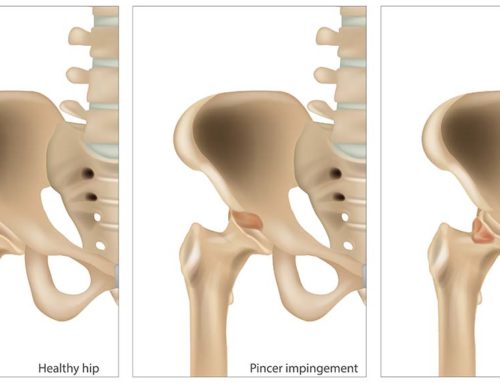Stress Fractures in the Spine / Sacrum
Stress fractures are a relatively common condition that we’ve previously blogged about. In a nutshell, the bone gets stressed (usually from exercise) to the point where there is a net breakdown of bone cells in an area. What we haven’t specifically addressed though is a sub-type of stress fractures that occur at the bottom of the spine. Insufficiency fractures in the sacrum are not that common but definitely a condition that practitioners should be aware of.
Sacral Insufficiency Fractures
The term “insufficiency” refers to a bone in which the mineral content (the quality of the bone tissue) is not up to par. Unfortunately, this reduced quality of bone can cause a person to be more susceptible to fracture. Sacral insufficiency fractures are very difficult to diagnose since they mimic many other conditions that affect the lower back and pelvis. In fact, they mimic the common type of uncomplicated lower back pain that lead many people to seek treatment from a chiropractor, massage therapist or a physiotherapist. The typical person who experiences a sacral insufficiency fracture is an elderly female who is postmenopausal and who has a reduced bone mineral density. In fact, 90% of sacral insufficiency fractures occur in elderly women. Any condition that reduces a person’s bone mineral quality may put them at risk for an insufficiency fracture. Other than postmenopausal osteoporosis, other causes include long-term use of corticosteroids, radiation therapy and hyperparathyroidism to name a few. A poor diet can also lead to a reduced bone mineral quality.
Usually a person who has a sacral insufficiency fracture has no obvious reason or cause that their back became sore. It often just builds up over time. Although the pain can refer or travel to the hip and legs, sacral insufficiency fractures would usually be painful in the sacrum. There may be a loss of mobility and the pain would likely be worse with weight bearing. Perhaps the best clinical tool to detect a sacral insufficiency fracture would be the improvement with lying down and worsening with weight bearing although many types of spinal pain do this.
Since this is a tricky and elusive diagnosis that mimics other types of back pain, further testing might be necessary to ensure an accurate diagnosis. Plain film x-rays not always useful though. MRI is the best test to detect this condition although a CT scan might make more sense since they are usually easier to have done quickly. If a sacral insufficiency fracture is detected, it might be a good idea to discuss with your family doctor whether and it’s time to test your bone mineral density.
Treatment
The treatment for stress fractures is rest. Although with most types of lower back pain we encourage patients to stay active and mobile, sacral insufficiency fractures usually require complete rest. Referral to a medical specialist is warranted to help the patient figure out the best course of care. Therapeutic modalities might be helpful in reducing pain and eventually, assistance with return to normal gait and movement is required. Progressive and careful strengthening is part of the recovery after the bone has healed. A medication that may help reduce the risk of fracture in the future is worth considering and should be discussed with your family doctor or medical specialist.
Do you live in Burlington, Oakville, Hamilton or the surrounding areas and have back pain? Give us a call, we can help!
References
Tsiridis E, Upadhyay N, Giannoudis PV. Sacral insufficiency fractures: current concepts of management. Osteoporosis International 2006; 17: 1716-1725.









